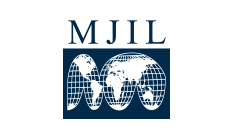Abstract
This essay seeks to broaden our understanding of government networks by placing them in more historical context and by elaborating different types of government networks within and without traditional international institutions. After a brief overview of the literature on transgovernmentalism since the 1970s in Part I, Part H sets forth a typology of three different categories of government networks. Part III then seeks to pinpoint the specific accountability concerns associated with each type. Part IV offers one approach to answering some current accountability concerns by adapting the concept of "information agencies" from the European Union to the global level. This analysis rests on a claim of similarity between global government networks and a number of EU governance structures, primarily the "comitology" system and related transgovernmental and public-private networks. Finally, building on the same premise, Part V briefly surveys some of the more fundamental reconceptualizations of democracy and distills various elements of these visions that could be useful in strengthening the democratic pedigree of government networks. It concludes with an appeal to add global legislative networks to the pluralist mix of global governance mechanisms.
Recommended Citation
Anne-Marie Slaughter,
Global Government Networks, Global Information Agencies, and Disaggregated Democracy,
24
Mich. J. Int'l L.
1041
(2003).
Available at:
https://repository.law.umich.edu/mjil/vol24/iss4/7

